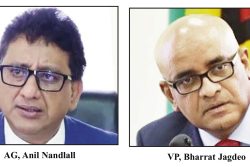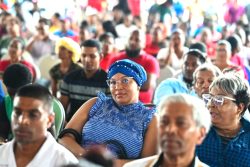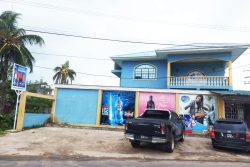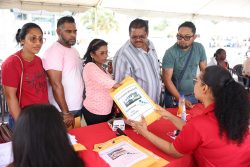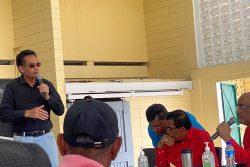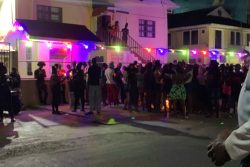Can someone please explain what is happening to political governance in Guyana? In just two days – the 29th and 30th of December – unnecessary controversies erupted over two issues, the Amaila Falls hydroelectric project and the Cheddi Jagan Research Centre (CJRC), which, had they been sensibly handled by the APNU+AFC government, could have been a signal to the Guyanese people that 2017 may indeed herald the beginning of their long sought after ‘good life’.
 It cannot be that the government deliberately sets out to accumulate negative public reaction on the scale it is doing but only last week, for similar reasons I concluded that what we are dealing with in this administration is a dominant autocratic mindset. This manner of dealing with the world which is very much a part of our general autocratic political culture is now compounded by the military orientation of this administration. Here I will focus on the CJRC issue but the regime’s handling of both of the above matters again makes this case.
It cannot be that the government deliberately sets out to accumulate negative public reaction on the scale it is doing but only last week, for similar reasons I concluded that what we are dealing with in this administration is a dominant autocratic mindset. This manner of dealing with the world which is very much a part of our general autocratic political culture is now compounded by the military orientation of this administration. Here I will focus on the CJRC issue but the regime’s handling of both of the above matters again makes this case.
Few would deny that Cheddi Jagan is sufficiently historically important for Red House to be given and/or maintained by the state in his honour. Indeed, our united parliamentary representatives said as much when, on 13 December 2007, a motion was unanimously passed in the National Assembly to create our nation’s highest national honour, the Order of Liberation, to pay tribute to Dr. Jagan’s struggle for a free and democratic Guyana.
I have no doubt that had the PPP been more inclusive about its intentions to establish the Red House Centre there would have been very little public objection. If this is so, with the current arrangement, which combines the use of state assets with the PPP leadership’s perennial control of the CJRC, the party only took on responsibilities that would have been those of the state with no personal benefit. Certainly, this is a far cry from any conspiracy to steal state resources but why was this institutional format chosen?
Red House was once the national home of the Jagans but though important, this is not the most important part of the story.
In my view, the PPP wanted to ensure that the Jagan legacy lives on and its own quest to establish political dominance in Guyana suggested that should it lose government that legacy would be at risk.
After all, in its misguided effort to dominate the political landscape, the PPP tried to control and/or destroy all the institutions, e.g. the trade unions and the Georgetown City Council, that were traditionally supportive of the PNC. Not properly understanding the nature of our kind of society, it even attempted to humiliate the African leadership by rejecting its suggestion of where the 1823 monument should be placed. Anticipating that should it leave government reprisals might follow, it sought to keep this important legacy in its owns hands.
This understood, in an ethnically divided country with extremely limited resources, there are good political and economic reasons why bringing together all the past presidents who tried but failed to mould our various ethnicities into a nation in one place so that their efforts might inspire others to succeed where they failed, is a worthy enterprise. Thus, I supported the government position that the Red House facilities should be dedicated to all presidents (Cheddi Jagan Research Centre: a conundrum of dominance. SN 4/11/2015).
It is a pity that the negotiations between the government and the CJRC trustees failed to come to some agreement for the joint use of the centre. The issue is a very emotional one for the PPP and it is always difficult to negotiate such subjective concerns. However, with patience, a positive intent and a firm grasp of all the surrounding factors, competent negotiators are usually able to extract acceptable results from the most intractable contexts.
Maybe it is too much to ask of these two traditionally secretive parties, but one suspects that the process of negotiations and the interest of the public would have been better served if it was made public what precisely was on the table? Simply to say that negotiations for the collective use of the Centre broke down is to say very little and now we hear from the government, a highly questionable position for a building of its size, that Red House is to also house the National Trust.
Unfortunately, the above observations are now ‘water under the bridge’ for the recent illegal and highhanded behaviour of the APNU+AFC regime must now have solidified the PPP in its view that its legacy would not be safe in the hands of this government and this does not bode well for political relations in Guyana.
What is eminently serious but still laughable is that the present difficulty in which the government finds itself arose not because of its intention to retrieve Red House but from the manner in which it attempted to do so.
Apparently the attorney general was able to convince the president to illegally give the CJRC, an institution in which a sizable and vociferous political opposition has an interest, 48 hours to vacate the premises of which it had actively been in possession for about fifteen years! If true, for this to have occurred at this level is truly astonishing!
Faced with its obvious wrongdoing, many regime sympathizers would have us believe that a fundamental aspect of the problem is that the government’s public relations are grossly inadequate. Of course, even the best public relations can only marginally help a bad decision and this was an extremely bad decision!
However, even if we are prepared to accept this sympathetic contention, what the CJRC story suggests is that for public relations to be effective in our case it would have to be very politically good; located and given serious leverage in the pre-decision making process at the highest level of the state and in my view, this is unlikely to happen.
As a result, all of the misfortunes of this regime will continue to be heaped on its ‘detractors’, whom it unwittingly feasts by its actions on a regular basis.
